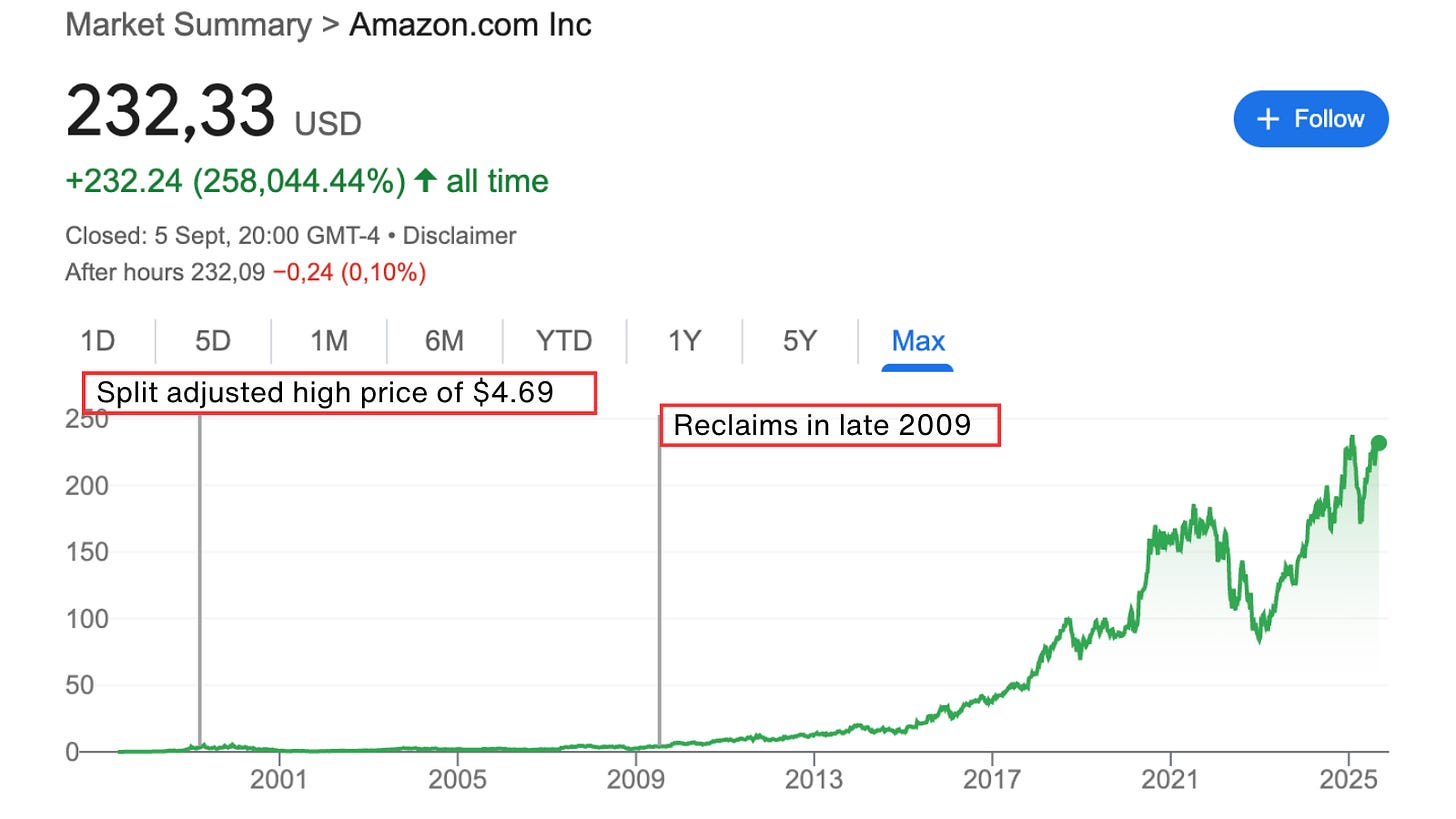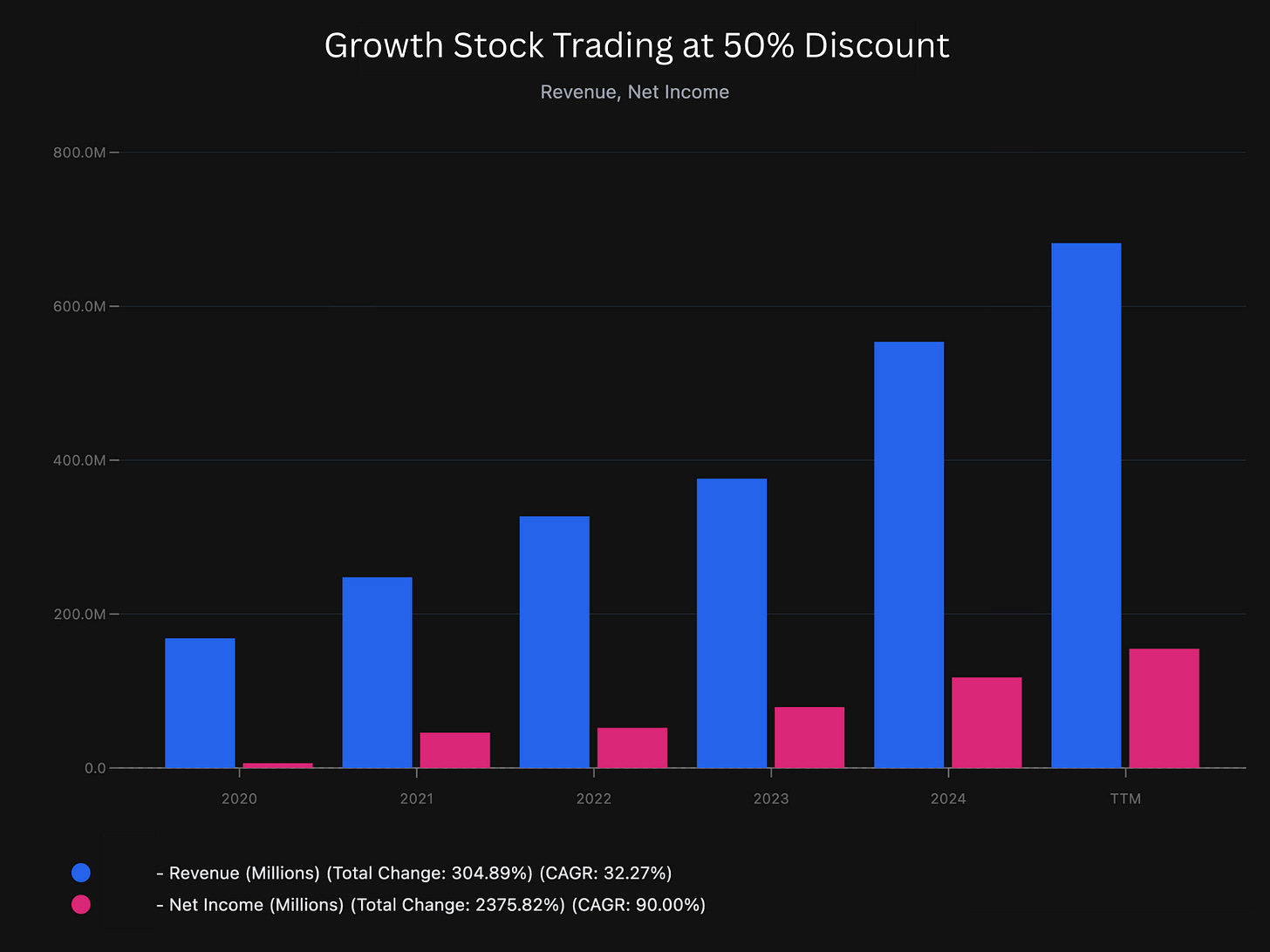Fast Growing, Niche Company Trading At 40% Discount!
It grew revenues by 32% and net income by 90% annually in the last 5 years. Yet, it's still trading at 40% discount to intrinsic value.
Investing is a complex discipline that requires getting many things right for success.
For instance, ff you are a long-term investor, the company you pick should have:
Runway for growth.
Strong competitive position.
Capable and honest management, etc.
Though there are many factors that should come together to succeed, there is only one factor that guarantees profits when gotten right.
You may pick the best management in the world, but it doesn’t guarantee profits; you may pick the strongest monopoly in the world, but it still doesn’t guarantee the stock will go up. Not the business, not the management, not the competition—it’s the price.
If you pick the right price, you can profit from the worst business in the world; if you pick the wrong price, the best business in the world will let you down.
Amazon illustrates this point pretty strongly.
It’s one of the best companies ever created, no question here. It hit its high of $4.49 (split adjusted) in 1999. People who bought it there had to wait for 10 years for it to reclaim that high point in late 2009:
This is one of the best companies in the world, run by one of the best entrepreneurs that history has ever seen. Yet, most buyers who bought the stock in 1999 lost substantial money, let alone making a bit.
On the other hand, there are people who invest in the worst companies that are guaranteed to go bankrupt, but they still make money because the liquidation price is higher than the market value of the company, and they correctly see through it.
Price is the only factor in investing that guarantees success when you get it right.
There is nothing else.
This is why the market is dry of opportunities for long-term investors now.
It’s around all-time highs, and naturally, most of the investable companies are trading at or above their fair value. It’s really hard for long-term investors to find high-quality businesses that trade at attractive prices.
Despite these conditions, we have come up with several new picks in the course of the last three months, and they are already ahead of themselves.
So, I was looking for new opportunities for a while, and I think I have found one.
This company has carved out a niche for itself in a crowded market, and they have come to dominate its niche in a matter of just a few years.
Result? The business exploded:
In the last 5 years, it:
Grew revenue by 32% annually.
Grew net income 90% annually.
Increased return on equity from 11% to 21%.
These are insane results by any measure. It is even more impressive given that this is just an eleven-year-old company with at least a decade of above-average growth ahead of it.
What’s even better?
Despite this neckbreaking growth, it’s trading at just 15 times forward earnings.
It’s one of the last remaining opportunities that I can currently see in the market.
So, let’s cut the introduction and dive deep into this overlooked gem!
🏭 Understanding the Business
Some businesses need to win their customer base from the ground up again and again.
Car makers are the classical examples. Only a small portion of people stick with the same brand once they decide to replace their cars. Most people like trying new brands. Thus, every year, only a small percentage of sales come from repeat customers.
This is a huge obstacle to consistent and predictable growth.
Think about it. A car maker sold a million cars last year. Even if you assume 20% of the customers next year will be those whose current car is the same brand, it still needs to add 800,000 new customers to match last year’s numbers.
This is a very hard thing to do, given that all other brands are also competing for the same potential new customers. This is why a car maker’s sales fluctuate wildly year over year. One year, Ford has better cars and captures a larger portion of new customers, one year it’s General Motors.
Some other businesses, on the other hand, tend to inherently retain customers they already have.
If they are able to retain 80% of the current customers next year, they need to find way lower number of new customers to achieve growth. These businesses tend to grow organically and more consistently over time.
They are called sticky businesses.
Enterprise software, subscription services, and banks are examples.
This is one of those extremely sticky businesses.




